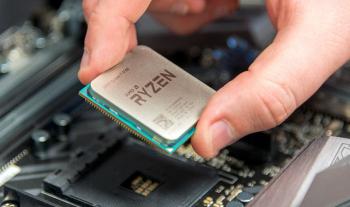AMD has uploaded a blog post to its gaming community website. The post, by AMD exec Robert Hallock, comes about a fortnight since the AMD Ryzen 7 processor family launch and seeks to clear up a few grey areas that have become apparent through both pro reviews and user testing. Topics addressed are; Temperature reporting, Thread scheduling, Power plans, and Simultaneous Multi-Threading (SMT).
AMD Ryzen 7 CPU temperatures
AMD Ryzen processor temperatures are reported to the system via a sensor called 'T Control,' or tCTL for short. This temperature might be offset in certain models to create "a consistent fan policy," throughout the range, explains AMD. Please check over the chart below for an example of a scenario where a Ryzen 7 CPU is running at 38°C. You will see that the Ryzen 7 1700X and 1800X offset the temperature sensor read by 20°C.
Temperature monitor software is expected to get refined to understand tCTL offsets and report correct temperatures in the future.
Thread scheduling
There have been some tech press reports of AMD Ryzen performing poorly on Windows 10 - compared to Windows 7 systems. AMD has investigated to see if there is any truth in this and have concluded that "the Windows 10 thread scheduler is operating properly for Zen."
AMD's Hallock explains that and outdated version of the Sysinternals Coreinfo utility produced incorrect topology data "that has been widely reported in the media". There are many applications that already make good use of the cores and threads in Ryzen. However there are indeed a number of apps and games that would benefit from Ryzen with some targeted optimisations. This is why AMD is distributing 300+ AMD Ryzen dev kit systems worldwide.
Power Plans, SMT paradox
Elsewhere in the AMD blog post Hallock explains why AMD recommends the high Performance power plan within Windows 10. In a nutshell this is because it turns core parking off, and allows for fast frequency changes.
Users have been perturbed by instances where SMT has reduced performance in some games while the expectation would be to see neutral/positive benefit from SMT. Indeed that is the case in a wide range of titles AMD has tested. However, the admitted 'outliers' to this rule could improve with "some simple changes," to the game code. A status update will be provided by AMD when this information is ready to share.








